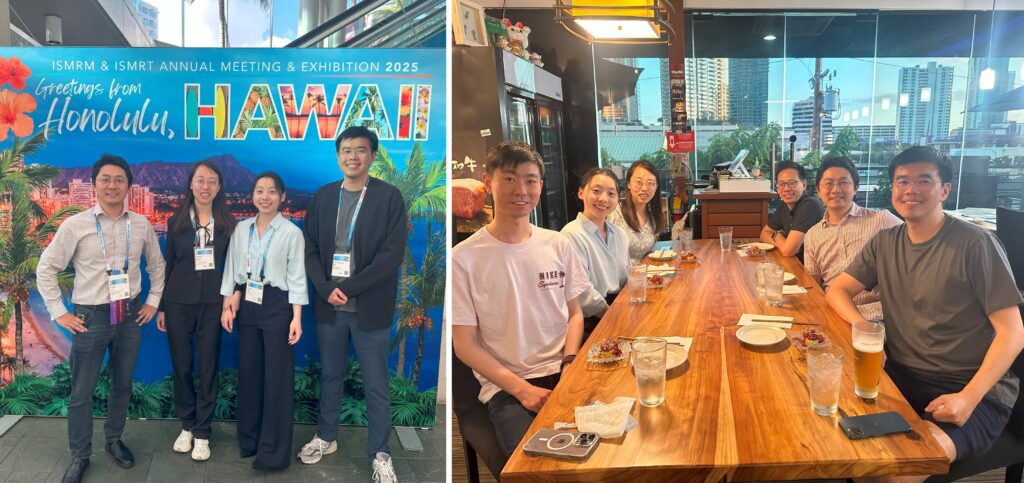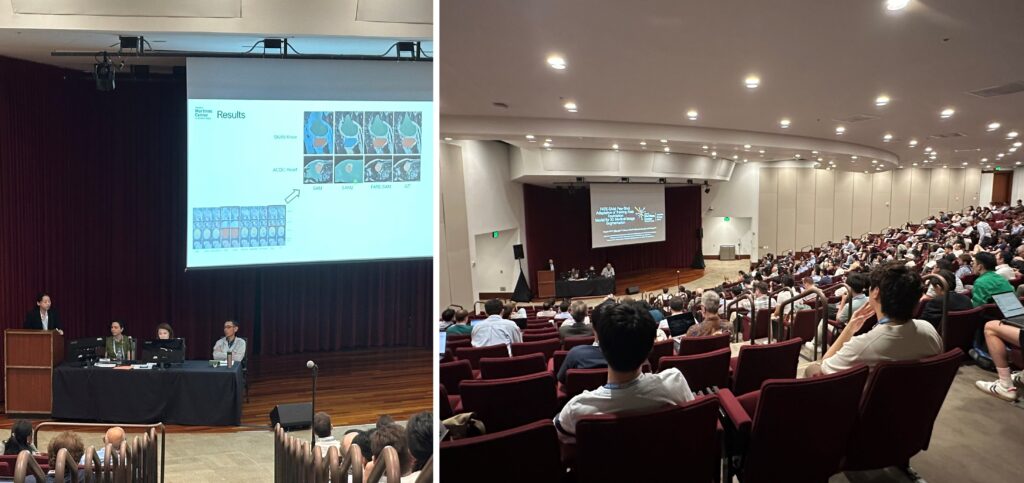We are proud to have showcased a diverse and forward-looking portfolio of research at the 2025 ISMRM Annual Meeting, held this year in Honolulu, Hawaii. Our team presented innovative work spanning MRI sequence development, quantitative tissue characterization, and AI-powered imaging analysis, highlighting our continued commitment to pushing the boundaries of medical imaging science.

Below is a summary of our lab’s contributions at the meeting:
🧠 Foundation Models for MRI
Yifan (Rosetta) Hu delivered an oral presentation titled:
“Vision Foundation Model for MRI Segmentation Through Training-Free Few-Shot Adaptation”
📅 Monday, May 12 | 09:03–09:15 | Room 310 (Liliʻu Theater)
This work explores how pretrained vision foundation models can be adapted for MRI segmentation tasks without retraining, enabling rapid generalization to new anatomical regions and imaging protocols.

🌀 Diffusion Modeling for Accelerated Imaging
Ruimin Feng presented our recent work:
“dDiMo: Domain-Conditioned and Temporal-Guided Diffusion Modeling for Accelerated Dynamic MRI”
📅 Monday, May 12 | 14:57–15:09 | Room 310 (Liliʻu Theater)
The talk introduced a novel diffusion-based generative model that incorporates temporal dynamics and domain conditioning to improve image reconstruction in highly accelerated dynamic MRI settings.

🎯 RF Pulse Design via Self-Supervised Learning
Albert Jang presented a poster:
“Generalize RF Pulse Design Using Physics-Guided Self-Supervised Deep Learning”
📅 Thursday, May 15 | 09:15–10:15 | Exhibition Hall #145
This work demonstrates a self-supervised framework that jointly optimizes RF pulses with physics-informed loss functions, enabling robust excitation design across B0/B1 inhomogeneities.
🦴 Quantitative Cartilage Imaging
Albert Jang also delivered an oral presentation on:
“Advanced In-Vivo 3D Quantitative Magnetization Transfer Imaging of Cartilage Extracellular Matrix of the Whole Knee Joint”
📅 Thursday, May 15 | 09:27–09:39 | Room 316C
This study presents an optimized mc-BTS imaging protocol for simultaneous multi-parameter qMT mapping in the knee joint, revealing rich contrasts for assessing cartilage degeneration and extracellular matrix integrity.

Looking Ahead
We thank our collaborators and the broader MRI community for engaging with us at ISMRM 2025. The meeting provided an exciting platform to share our progress and receive valuable feedback. We look forward to continuing our efforts in advancing generalizable, efficient, and clinically meaningful MRI technologies.
Stay tuned for upcoming publications and project updates from our lab!
